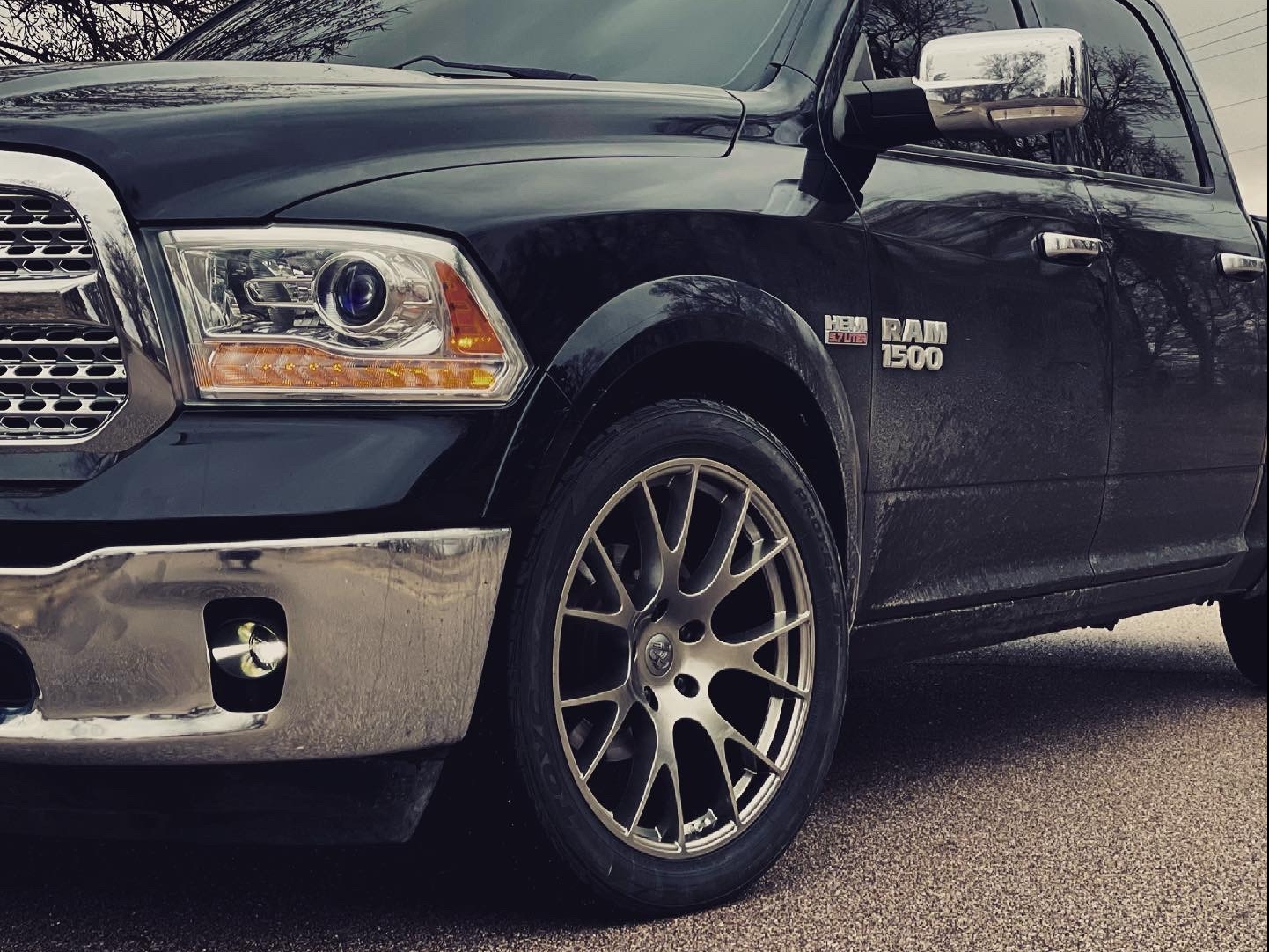
Understanding Diameter, Width, Aspect Ratio and Overall Diameter Adjustments for Dodge Ram Wheel and Tire Packages

If you use your Ram as a workhorse, you need as much traction as possible for hauling items and driving around heavy cargo. If your Dodge is an off-road machine, then you need Ram wheels and tires that allow you to clear obstacles and maintain balance on uneven surfaces. And if your truck is a daily driver, you want wheels and tires that offset the size of your vehicle to make for a smooth and comfortable ride. That’s why we always recommend that truck owners put a lot of thought and research into a decision when purchasing new wheels and tires, and check out our truck wheel guide too. That’s especially true if you’re planning on making some diameter adjustments by changing the size of your wheels and/or tires. This process, called tire plus sizing, is a great way to change how your Ram performs without tinkering under the hood or with computers, but you need to make sure you do it right.
Understanding the Tire Sizes

Before plus sizing your tires, it’s important to understand what elements of your wheels and tires need to remain stable, and which ones you can adjust. The first two numbers on your tires are the tire width and the aspect ratio, respectively. You can adjust these numbers a bit if you are purchasing new tires while keeping the factory wheels. The third number, however, is non-negotiable. That’s the rim diameter, and your tires need to match it precisely. If you want to install a tire with a different rim diameter size, you’ll need to also swap out your wheels. That’s where plus sizing comes into play.
Different Diameter Adjustments

There are five common size adjustments that are made with wheel and tire combos. Here’s what you need to know about each one.
Minus Sizing
Minus sizing is exactly what it sounds like: the rare instance where you opt for smaller tires. With minus sizing, you decrease the rim size, usually by an inch. The tire width and aspect ratio are then adjusted to match the wheel, leaving you with a smaller tire. In general, minus sizing is only done during harsh winter conditions, when smaller tires can help prevent sliding on ice and water.
Plus Zero Sizing
Plus zero sizing is the smallest upgrade to tire size. With this diameter adjustment, you retain your factory wheels, while slightly increasing the tire width and reducing the aspect ratio. This allows you to accommodate wider tires without having them be taller than the originals.
Plus One Sizing
This diameter adjustment is the result of a one-inch wheel diameter increase. To match these larger rims, the tire width is increased by 10 millimeters, and the aspect ratio is dropped by 10 points. Plus one sizing is a common choice for Ram drivers when purchasing wheel and tire packages, as it can strongly improve performance without dramatically hurting the ride.
Plus Two Sizing
With plus two sizing, you’re bumping up the rims by a whole two inches in diameter. To make the truck drive properly, the tire width is increased by 20 millimeters, while the aspect ratio is reduced by 15 points from the original size. Needless to say, plus two sizing is more drastic than plus one sizing, and will have a fairly dramatic impact on how your truck drives. It’s going to feel rougher since you’re losing some of the sidewall cushion that smooths out your ride.
Plus Three Sizing
Finally, there’s plus three sizing, which is the most extreme diameter adjustment for your truck. As you might expect, this is done by increasing the rim size by three inches and the tire width by 30 millimeters, while lowering the aspect ratio by 20 points from stock. Plus three sizing isn’t all that common, and is usually reserved for drivers who want to show off their trucks.
Overall Diameter Adjustments

These plus sizes are great for when you’re looking to maintain the same ride height since the tire height doesn’t change, but what about when you want to put taller tires on? It’s common after installing a lift kit, or if you want to fill the wheel arches, or if you want more cushioning when you’re pounding down off-road trails.
That’s when you forget about the width aspect ratio as you’re increasing rim size. But when you install 33-inch tires – or 35s, 37s, or anything else taller than the factory tire height – there are considerations. Along with the taller look, you may NEED to lift your truck to prevent contact with the suspension. It’s all but guaranteed your turning radius will be tighter, and you’ll feel more sway when you’re on the highway.
However, the benefits might outweigh the downsides if you’re a trail driver. The taller tires also give you the option to air down, giving immensely more traction if you’re crawling across obstacles like boulders. There’s less likelihood of popping a tire as you go over crags and branches too since there’s more give.